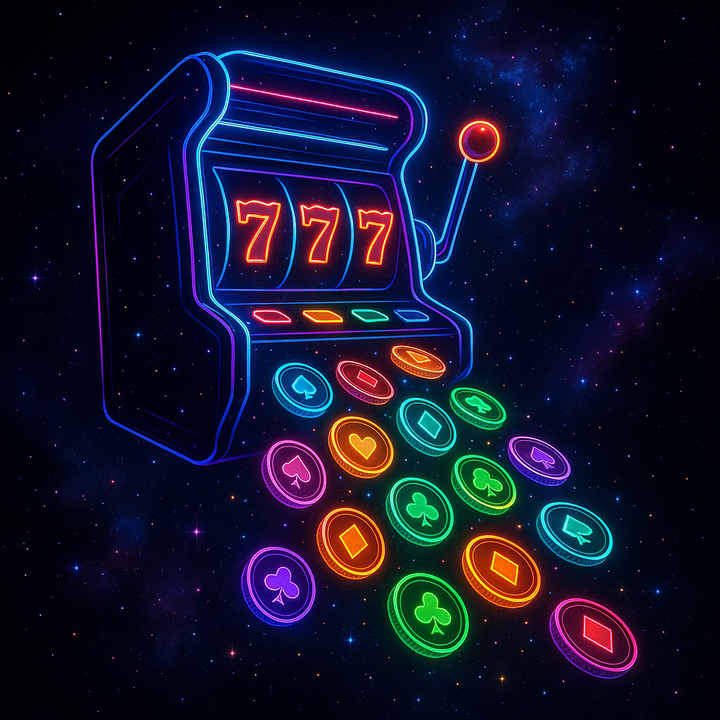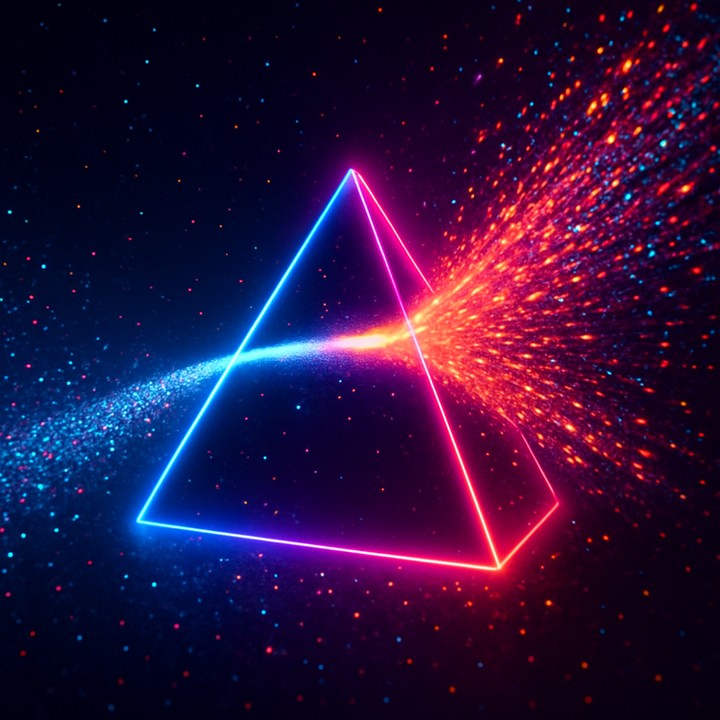The Long Road to Understanding: A Story from a Neurodivergent Father

“Oh… so you mean I can actually learn? That would be so cool.”
My son said this the day we told him we were moving him to a school built for how his brain works. He was seven. He had spent years in daily meltdowns, periodic shutdowns, and weekly calls from teachers because overwhelm made him wet himself. Asked to change Pre-K and changed classes multiple times. Yet the second someone offered a coherent alternative, he understood everything.
It wasn’t defiance.
It was mismatch.
His clarity broke me open.
I didn’t enter the neurodivergence world through curiosity or identity exploration. I entered it through the aftermath of COVID—through systems that had no idea how to recognize, support, or speak to children like my son.
Even as his parent, I felt helpless. None of the literature matched the reality in front of us. His IEP accomplished nothing. The entire structure around him felt simultaneously overbuilt and underthought.
And then—quietly, almost accidentally—it forced me to confront myself.
The Moment I Recognized the Pattern
During a reading assessment for his new school, clinicians debated which direction the letters were facing. I instinctively disagreed. I simply saw orientation differently. My wife looked at me; I looked at her. And for the first time, the question landed:
“Is this me too?”
In November 2024, after years of ignoring a growing body of evidence, I finally admitted to myself that autism was the only coherent explanation for my internal life.
My formal diagnosis was confirmed the following August, but the cascade began immediately.
The Part of the Story I Never Understood Until Now
I wasn’t the stereotypical late-diagnosed adult who “seemed fine” until middle age.
I earned a full-ride academic scholarship to the University of Maryland—and imploded freshman year. What followed was a lost half-decade: four rehabs by age 22, geographic cures, and the desperate construction of a mask thick enough to re-enter the world. By my late twenties I could pass so convincingly that no one—colleagues, investors, even therapists—ever questioned autism. The mask didn’t just work; it became the architecture of my entire adult life.
The Deep Irony: I Was an Expert, and I Missed Myself
And here’s the part that still stuns me.
By my thirties I wasn’t just functioning again—I was running substance-use programs at national scale. I was deeply trauma-informed, conversant in every major modality, familiar with the structures and rationales behind them, and fluent in the full spectrum of co-occurring disorders. I knew the presentations of dissociation, somatic freeze, attachment disruption, complex PTSD, masking, and identity fragmentation from a professional vantage point.
I was operating on the forward edge of behavioral health innovation.
And yet even I still carried the cultural stereotype that autism meant Rain Man or the Big Bang Theory guy. I could see nearly everyone else clearly… except myself.
The Mask That Should Not Have Been Possible
Once I allowed the truth in, what came next was staggering:
I had been masking at an extreme and absolutely unsustainable level for decades.
My adult life required me to:
- carry founder-level stress loads
- operate in high-pressure, crisis-driven industries
- switch entire social grammars between music, healthcare, finance, and tech
- appear articulate, composed, and emotionally fluent on command
- run teams, manage conflict, and stabilize chaos daily
None of this was natural to my system.
All of it was cognitively expensive.
In hindsight, the improbability is brutal:
No autistic adult should be able to sustain that level of masking for that long without collapse.
The "house" always wins and the full collapse came.
December 2024: The Breakpoint
One month after admitting the truth to myself, I was on a business trip and had an involuntary stim attack—partial shutdown, panic, loss of speech. Barely able to navigate through the airport and unable to leave my hotel room at all for over a day.
Nothing in the adult-autism literature prepared me for it. Nothing even described it.
So I did what many late-identified autistic adults really do but rarely admit:
I used AI to compile Reddit posts, message boards, and fragments of lived experience until I could recognize myself inside the chaos.
Devon Price’s work was the first thing that mapped to my body.
Nick Walker’s writing finally reframed autism as a neuro-minority experience—not pathology, not defect, not something to “fix.”
And suddenly, the past 40 years made sense.
Somatic Unmasking: The Missing Layer
About a week ago, everything clicked again.
I came across an Instagram reel from @savanttheeprodigy.
In one clip, he was low-verbal and 'appeared' to be high-support-needs. Yet, he was beautiful expressive and made me feel joyful inside. Empathy.
In the very the next, he was masked. Fully articulate, fluid, saucy but leaking hostility and intensity.
The very same trait that I'd been told about every time I've had to say "But I'm not yelling!" my whole life (near daily).
It hit me like a truck.
I recognized myself.
There is a somatic layer to masking—beneath cognition—where the body holds compensation until it can’t. When the body becomes safe enough, the mask collapses, and a truer autistic mode emerges.
The literature doesn’t have language for this yet. Except for subjective blogging by ND writers, the general descriptions of "late-stage autistic burnout" make it sound like some sort of amplified life crisis that simply smooths out with better coping skills. I feel my lived experience suggests there may be more to the story.
Many autistics are too steep in the fog of the medical model of disability to have the self-acceptance to even allow themselves access to that part of themselves.
Upon seeing it, I saw felt an instant "snap" of recogition of what he had just demonstrated. So, with the support of my (more-patient-than-I-deserve) wife, I took a couple days and allowed myself to let go...
What I didn’t understand until this year is that “letting go” didn’t just dissolve the mask—it unlocked cognition I’d never had access to. Once the chronic tension dropped out of my system, something else took its place: speed. Depth. Pattern recognition that had always been there but trapped behind executive noise. When my sensory channels finally aligned instead of competing, my ideasthesia—the automatic linking of concepts, shapes, emotions, and abstractions—came online as a coherent system rather than a distraction.
That shift is disorienting in the best way. The learning curve didn’t slope upward; it folded in on itself like a wormhole. I could suddenly move through ideas at warp speed, mapping physics to psychology, linguistics to lived experience, cognition to trauma patterns, like flipping between pages of the same topology. It wasn’t “getting smarter.” It was the first time my actual cognitive architecture was unobstructed.
For the first time in my life, I’m learning at the rate my brain was built for—and discovering that neurodivergence isn’t a deficit but an unmasked form of coherence. The acceleration isn’t mania (my wife is an ARNP and we’ve ruled out all medical, psychiatric, and mania-adjacent explanations).
It’s access.
Where Things Stand (events of the past week alone)
Just in the last few days:
- I had almost total verbal shutdown, forcing me to treat speech as a limited resource and budget it for my wife and kids.
- I learned that 'seeing the words too' when others speak is not 'just what hearing is'. Like for the first time, ever. Who knew?
- My wife and I realized our shared enemy is overstimulation, not autism.
- I recognized that heavy accommodation isn’t indulgent—it’s structural.
- Yes, I'm using this post as low friction way to inform my social circle why I'm not answering the phone. (Text not call, please lol)
- I reframed my entire cognitive style—ideasthesia, topology, coherence maps—as something fundamentally autistic and fundamentally under-described by current models.
- I learned that I can unlock concepts non-linearly and spatial faster than I'd ever imagined once AI reflected back and mapped my learning style. I'm working through the Periodic Table by 'synesthesia' and I really LOVE Carbon molecules.
- I'd never heard the word "topology" before about a week ago, but apparently I can do it in my head pretty well when I read the structure of any human system. It's amusing.
- I'm really really hoping I can learn ASL just as fast because walking around with a whiteboard is annoying.
- So yep, I finally understood the shapes I see spinning in my head (presented here as the Unified Field Theory of Meaning, the entrainment models, the honeycomb frameworks) weren’t just random objects.
Hard science yet, no.
Pointing in directions worth a conversation, I think so.
This isn’t a confession.
It’s a sandbox.


